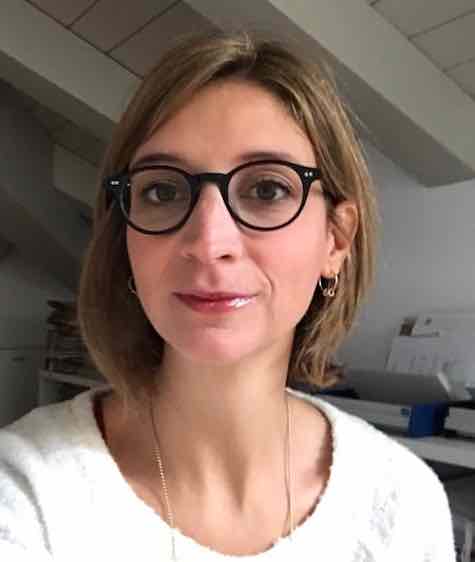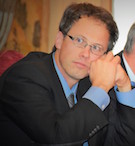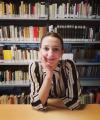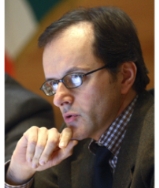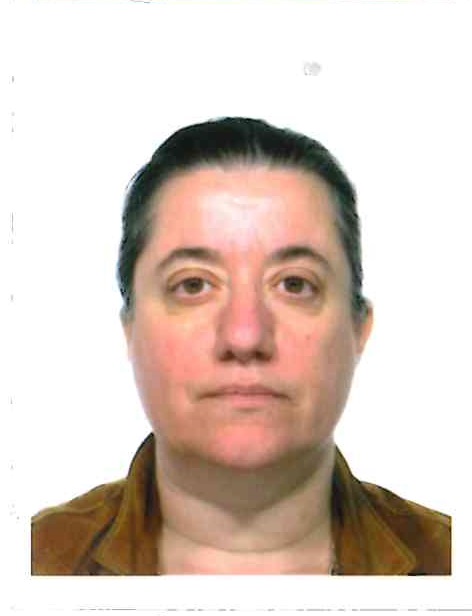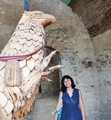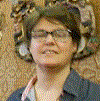Studying at the University of Verona
Here you can find information on the organisational aspects of the Programme, lecture timetables, learning activities and useful contact details for your time at the University, from enrolment to graduation.
Academic calendar
The academic calendar shows the deadlines and scheduled events that are relevant to students, teaching and technical-administrative staff of the University. Public holidays and University closures are also indicated. The academic year normally begins on 1 October each year and ends on 30 September of the following year.
Course calendar
The Academic Calendar sets out the degree programme lecture and exam timetables, as well as the relevant university closure dates..
| Period | From | To |
|---|---|---|
| ANNUALE | Oct 1, 2018 | Jun 1, 2019 |
| I semestre | Oct 1, 2018 | Jan 12, 2019 |
| II semestre | Feb 18, 2019 | Jun 1, 2019 |
| Session | From | To |
|---|---|---|
| ESAMI LINGUE- sessione invernale | Jan 14, 2019 | Feb 16, 2019 |
| ESAMI LINGUE- sessione estiva | Jun 3, 2019 | Jul 27, 2019 |
| ESAMI LINGUE- sessione autunnale | Aug 26, 2019 | Sep 21, 2019 |
| Session | From | To |
|---|---|---|
| LAUREE LINGUE - sessione autunnale (a.a. 2017/18) | Nov 12, 2018 | Nov 17, 2018 |
| LAUREE LINGUE - sessione straordinaria (a.a. 2017/18) | Apr 1, 2019 | Apr 6, 2019 |
| LAUREE LINGUE - sessione estiva (a.a. 2018/19) | Jul 8, 2019 | Jul 13, 2019 |
| LAUREE LINGUE - sessione autunnale (a.a. 2018/19) | Nov 4, 2019 | Nov 9, 2019 |
| LAUREE LINGUE - sessione straordinaria (a.a. 2018/19) | Mar 30, 2020 | Apr 4, 2020 |
| Period | From | To |
|---|---|---|
| Festa di Ognissanti | Nov 1, 2018 | Nov 1, 2018 |
| Sospensione dell'attività didattica | Nov 2, 2018 | Nov 3, 2018 |
| Festa dell’Immacolata | Dec 8, 2018 | Dec 8, 2018 |
| VACANZE DI NATALE | Dec 22, 2018 | Jan 6, 2019 |
| VACANZE DI PASQUA | Apr 19, 2019 | Apr 23, 2019 |
| Sospensione dell'attività didattica | Apr 24, 2019 | Apr 24, 2019 |
| Festa della liberazione | Apr 25, 2019 | Apr 25, 2019 |
| Festa del lavoro | May 1, 2019 | May 1, 2019 |
| Sospensione dell'attività didattica | May 20, 2019 | May 20, 2019 |
| Festa del Santo Patrono | May 21, 2019 | May 21, 2019 |
| Festa della Repubblica | Jun 2, 2019 | Jun 2, 2019 |
| VACANZE ESTIVE | Aug 13, 2019 | Aug 18, 2019 |
Exam calendar
Exam dates and rounds are managed by the relevant Foreign Languages and Literatures Teaching and Student Services Unit.
To view all the exam sessions available, please use the Exam dashboard on ESSE3.
If you forgot your login details or have problems logging in, please contact the relevant IT HelpDesk, or check the login details recovery web page.
Should you have any doubts or questions, please check the Enrollment FAQs
Academic staff
 daniele.beltrame@univr.it
daniele.beltrame@univr.it
 bernardo.calabrese@univr.it
bernardo.calabrese@univr.it
 silvia.cavalieri@univr.it
silvia.cavalieri@univr.it
 riccardo.cella@univr.it
riccardo.cella@univr.it
 elisa.dallarosa@univr.it
elisa.dallarosa@univr.it
 katiuscia.darici@univr.it
katiuscia.darici@univr.it
 sara.dattoma@univr.it
sara.dattoma@univr.it
 jacopo.galavotti@univr.it
jacopo.galavotti@univr.it
 diegogabriel.krivochen@univr.it
diegogabriel.krivochen@univr.it
 stefania.montemezzo@univr.it
stefania.montemezzo@univr.it
 chunye.niu@univr.it
chunye.niu@univr.it
 simone.pregnolato@univr.it
simone.pregnolato@univr.it
 fabioantonio.scrignoli@univr.it
fabioantonio.scrignoli@univr.it
 tania.triberio@univr.it
tania.triberio@univr.it
 sonia.trovato@univr.it
sonia.trovato@univr.it
 francesco.zuin@univr.it
francesco.zuin@univr.it
Study Plan
The Study Plan includes all modules, teaching and learning activities that each student will need to undertake during their time at the University.
Please select your Study Plan based on your enrollment year.
1° Year
| Modules | Credits | TAF | SSD |
|---|
1st foreign language2nd foreign language1st foreign literature and cultureGerman literature and culture 1
2nd foreign literature and cultureGerman literature and culture 1
2° Year activated in the A.Y. 2019/2020
| Modules | Credits | TAF | SSD |
|---|
1st foreign language2nd foreign language1st foreign literature and culture or a related courseEnglish literature and culture 2
French literature and culture 2
German literature and culture 2
Spanish literature and culture 2
2nd foreign literature and culture or a related courseEnglish literature and culture 2
French literature and culture 2
German literature and culture 2
Spanish literature and culture 2
Italian literature and culture
Theory and Techniques of communication
Geography of communication and international trade
Modern and Contemporary Economic History
3° Year activated in the A.Y. 2020/2021
| Modules | Credits | TAF | SSD |
|---|
1st foreign language2nd foreign languageComparative and European Public law
Principles of international marketing
| Modules | Credits | TAF | SSD |
|---|
1st foreign language2nd foreign language1st foreign literature and cultureGerman literature and culture 1
2nd foreign literature and cultureGerman literature and culture 1
| Modules | Credits | TAF | SSD |
|---|
1st foreign language2nd foreign language1st foreign literature and culture or a related courseEnglish literature and culture 2
French literature and culture 2
German literature and culture 2
Spanish literature and culture 2
2nd foreign literature and culture or a related courseEnglish literature and culture 2
French literature and culture 2
German literature and culture 2
Spanish literature and culture 2
Italian literature and culture
Theory and Techniques of communication
Geography of communication and international trade
Modern and Contemporary Economic History
| Modules | Credits | TAF | SSD |
|---|
1st foreign language2nd foreign languageComparative and European Public law
Principles of international marketing
| Modules | Credits | TAF | SSD |
|---|
Legend | Type of training activity (TTA)
TAF (Type of Educational Activity) All courses and activities are classified into different types of educational activities, indicated by a letter.
English literature and culture 2 [CInt] (2019/2020)
Teaching code
4S002910
Teacher
Coordinator
Credits
9
Also offered in courses:
- English literature and culture 2 [Tur] of the course Bachelor's degree in Languages and Cultures for Tourism and International Commerce
Language
Italian
Scientific Disciplinary Sector (SSD)
L-LIN/10 - ENGLISH LITERATURE
Period
I semestre (Lingue e letterature straniere) dal Sep 30, 2019 al Jan 11, 2020.
Learning outcomes
The course, taught in English, aims to provide students with an introduction to British literature from the Renaissance to late Romanticism, focussing on some of the most representative works. The course also aims to introduce the main critical approaches and the main features of literary genres.
The overall goal of the course is to provide students with a good level of knowledge of literary history (in terms of historical context, texts, genres, movements and authors) and to develop their critical skills for analysis, argumentation and exposition in English, in relation to various typologies of literary texts in their historical-cultural context.
At the end of the course, students will be able to:
- analyse the set texts and place them in their respective historical-cultural contexts;
- describe the texts in a structured and informed way, taking into account literary conventions and applying an informed critical approach;
- discuss literary topics in English in a clear and consistent way.
Program
"Juliet and the others. Changing attitudes towards marriage from the Renaissance to the eighteenth century"
From mating arrangements, which still characterized matrimonial alliances in the Renaissance, to the later emergence of the so-called companionate marriage, the modern age was characterized by the growth of affective individualism and accordingly experienced changing attitudes towards courtship, matrimony, and the family institution. Looking at a selection of dramatic and narrative texts from the Renaissance to the eighteenth century, the module will investigate the idea of marriage and its representation by analysing its changing literary, cultural, economic, and political meaning, also taking into account generic diversity, from tragedy to comedy, to the novel.
Please be advised
The programme consists in three parts:
a. Primary texts,
b. and b.1 References and References for non-attending students,
c. Handbook.
Language: lectures will be in English.
Further details on required readings and general information on bibliographical material will be provided during classes.
BIBLIOGRAPHY
a. Primary texts
- William Shakespeare, Romeo and Juliet, ed. by Jill Levenson (Oxford University Press, 2000).
- John Dryden, Marriage A-la-mode, in The Works of John Dryden, ed. by John Loftis, David S. Rodes, and Vinton A. Dearing (University of California Press, 1978), vol. 11, pp. 219-316.
- Daniel Defoe, Moll Flanders, ed. by David Blewett (Penguin, 2003).
- Oliver Goldsmith, The Vicar of Wakefield, ed. by Arthur Friedman (Oxford University Press, 2006).
b. References
- Catherine Belsey, Romeo and Juliet. Language & Writing (Bloomsbury, 2014), chapters 1-4, pp.1-86.
- Lynette Hunter and Paul Lichtenfels, Negotiating Shakespeare’s Language in Romeo and Juliet (Ashgate, 2009), pp. 85-131.
- Jason Denman, “‘Too hasty to stay’: Erotic and Political Timing in Marriage à la Mode”, Restoration: Studies in English Literary Culture, 1660-1700, Vol. 32, No. 2 (Fall 2008), pp. 1-23 (available on Jstor – see MOODLE for instructions).
- Ian Watt, The Rise of the Novel: Studies in Defoe, Richardson and Fielding (Penguin, 1972), pp. 9-65 and 104-151.
- David Blewett, “Changing Attitudes toward Marriage in the Time of Defoe: The Case of Moll Flanders”, Huntington Library Quarterly, Vol. 44, No. 2 (Spring 1981), pp. 77-88 (available on Jstor – see MOODLE for instructions).
- Robert H. Hopkins, “Matrimony in The Vicar of Wakefield and the Marriage Act of 1753”, Studies in Philology, Vol. 74, No. 3 (July 1977), pp. 322-339 (available on Jstor – see MOODLE for instructions).
b1. References for non-attending students
- B.J. Sokol and Mary Sokol, Shakespeare, law and marriage (Cambridge University Press, 2003), pp. 1-41 and 93-116.
- Laura Brown, “The Divided Plot: Tragicomic Form in the Restoration”, ELH, Vol. 47, No. 1 (Spring 1980), pp. 67-79 (available on Jstor – see MOODLE for instructions).
- Loretta Innocenti, “Introduzione”, in L’invenzione del vero. Forme dell’autenticazione nel romanzo inglese del ’700, a c. di Loretta Innocenti, Pacini, 2000, pp. 5-19.
c. Handbook
As regards the literary and cultural context spanning from the Renaissance to the Enlightenment, students will refer to:
- Andrew Sanders, The Short Oxford History of English Literature (Oxford University Press, 2003, third edition), chapters 3 (“Renaissance and Reformation: Literature 1510-1620”), 4 (“Revolution and Restoration: Literature 1620-1690) and 5 (“Eighteenth-Century Literature 1690-1780”).
FURTHER MATERIALS
Other teaching materials (slides, images, videos, etc.) that will be used in class will be available for download from the MOODLE e-repository. These contents do not substitute but complement the mandatory readings listed in the Bibliography section above.
| Author | Title | Publishing house | Year | ISBN | Notes |
|---|---|---|---|---|---|
| David Blewett | “Changing Attitudes toward Marriage in the Time of Defoe: The Case of Moll Flanders”, Huntington Library Quarterly, Vol. 44, No. 2, pp. 77-88 | 1981 | Secondary text. | ||
| Loretta Innocenti | “Introduzione”, in L’invenzione del vero. Forme dell’autenticazione nel romanzo inglese del ’700, a c. di Loretta Innocenti | Pacini | 2000 | Secondary text, pp. 5-19. | |
| John Dryden | Marriage-A-la-mode in The Works of John Dryden (vol. 11) | UCLA Press | 1978 | Primary text, pp. 219-316. | |
| Robert H. Hopkins | “Matrimony in The Vicar of Wakefield and the Marriage Act of 1753”, Studies in Philology, Vol. 74, No. 3, pp. 322-339 | 1977 | Secondary text. | ||
| Daniel Defoe | Moll Flanders, ed. by David Blewett | Penguin | 2003 | ||
| Lynette Hunter and Paul Lichtenfels | Negotiating Shakespeare’s Language in Romeo and Juliet | Ashgate | 2009 | Secondary text, pp. 85-131. | |
| William Shakespeare | Romeo and Juliet, ed. by Jill Levenson | OUP | 2000 | Primary text | |
| Catherine Belsey | Romeo and Juliet. Language & Writing | Bloomsbury | 2014 | Secondary text, pp. 1-86. | |
| B.J. Sokol and Mary Sokol | Shakespeare, law and marriage | CUP | 2003 | Secondary text, pp. 1-41 and 93-116. | |
| Laura Brown | “The Divided Plot: Tragicomic Form in the Restoration”, ELH, Vol. 47, No. 1, pp. 67-79 | 1980 | Secondary text | ||
| Ian Watt | The Rise of the Novel: Studies in Defoe, Richardson and Fielding | Penguin | 1972 | Secondary text, pp. 9-65 and 104-151. | |
| Andrew Sanders | The Short Oxford History of English Literature | OUP | 2004 | Primary text, ch. 3, 4, 5. | |
| Oliver Goldsmith | The Vicar of Wakefield, ed. by Arthur Friedman | OUP | 2006 | Primary text | |
| Jason Denman | “‘Too hasty to stay’: Erotic and Political Timing in Marriage à la Mode”, Restoration: Studies in English Literary Culture, 1660-1700, Vol. 32, No. 2, pp. 1-23 | 2008 | Secondary text. |
Examination Methods
Typology: oral exam. There will be no mid-term tests.
Due to the Coronavirus pandemic, and in accordance with the University of Verona guidelines, during the 2020 summer exam session the assessment modality will be modified as follows: online oral exam.
The exam will consist in an oral discussion (in English) that will test the knowledge of the module’s topics (texts, authors, and genres) and the literary and cultural context (c. Handbook; main authors and movements from the Renaissance to the Enlightenment).
Assessment will consider: 1. the knowledge and comprehension of primary texts, 2. the development of good analytical and synthetic skill levels with regard to the main historical, cultural, textual, and critical topics of the module, 3. the use of an appropriate vocabulary. Students may be required to read and comment on passages taken from primary texts (see a. above).
Type D and Type F activities
To discover all the teaching activities accredited by the foreign teaching college click here
Career prospects
Module/Programme news
News for students
There you will find information, resources and services useful during your time at the University (Student’s exam record, your study plan on ESSE3, Distance Learning courses, university email account, office forms, administrative procedures, etc.). You can log into MyUnivr with your GIA login details: only in this way will you be able to receive notification of all the notices from your teachers and your secretariat via email and soon also via the Univr app.
Student login and resources
Gestione carriere
Assegnazione tutore
Attività accreditate D/F
Calendario didattico dettagliato
Cambio lingua curriculare
Competenze informatiche
Competenze linguistiche (prima e seconda lingua)
Competenze linguistiche in triennale (terza lingua CFU F)
Compilazione del piano didattico
Corso di Lingua portoghese
Erasmus+ e altre esperienze all'estero
Linguistic training CLA
Presentazione dei corsi di studio e Open day
Graduation
List of theses and work experience proposals
| Stage | Research area |
|---|---|
| PROGETTO MAMBRINO Stage per bibliografia | Various topics |
Saperi minimi
Stage e tirocini
Nel piano didattico della laurea triennale in Lingue per il turismo e il commercio internazionale (L12) è previsto un periodo di stage obbligatorio (CFU 6) in organizzazioni imprenditoriali.
Le attività di stage sono finalizzate a far acquisire allo studente una conoscenza diretta in settori di particolare interesse per l’inserimento nel mondo del lavoro e per l’acquisizione di abilità professionali specifiche.
Le attività di stage sono svolte sotto la diretta responsabilità di un singolo docente presso studi professionali, enti della pubblica amministrazione, aziende accreditate dall’Ateneo veronese.
I crediti maturati in seguito ad attività di stage saranno attribuiti secondo quanto disposto nel dettaglio dal “Regolamento d’Ateneo per il riconoscimento dei crediti maturati negli stage universitari” vigente.
- Tutte le informazioni in merito agli stage per futuri studenti sono disponibili alla pagina Stage e tirocini.
- Tutte le informazioni in merito agli stage per studenti iscritti sono pubblicate in MyUnivr - come fare per - stage e tirocini.
- Tutte le informazioni in merito agli stage per le aziende sono disponili alla pagina Stage e tirocini per azienze.
Ulteriori informazioni al seguente link https://www.univr.it/it/i-nostri-servizi/gestione-carriere-studenti-lingue-e-letterature-straniere/stage-e-tirocini-lingue-e-letterature-straniere

 +39 045802 8409
+39 045802 8409






















